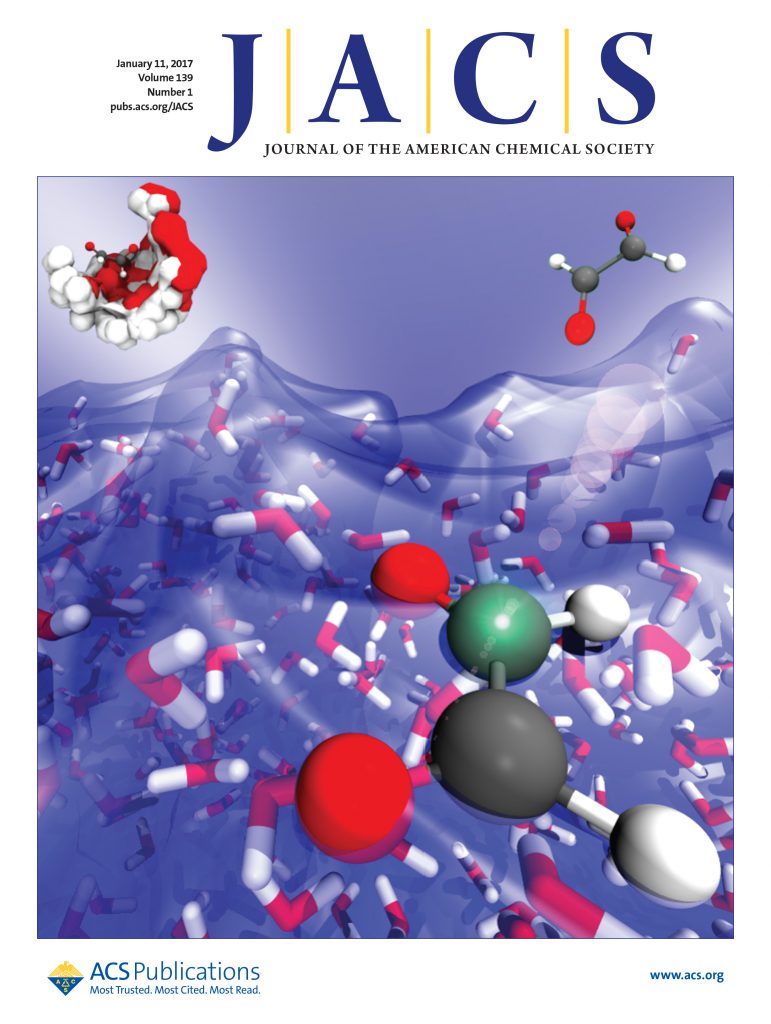Orthogonally Functionalizable Redox-Responsive Polymer Brushes: Catch and Release Platform for Proteins and Cells.
IF 15.6
1区 化学
Q1 CHEMISTRY, MULTIDISCIPLINARY
引用次数: 0
Abstract
Polymer brushes engineered to "specifically capture" and "release on demand" analytes such as dyes, proteins, and cells find biomedical applications ranging from protein immobilization to cell death. Utilizing a disulfide-linker-containing monomer as a building block enables the fabrication of a redox-responsive polymer brush platform with the "catch and release" attribute. Herein, thiol-reactive redox-responsive polymer brushes are fabricated using a pyridyl disulfide-based monomer, and their postpolymerization functionalization is demonstrated via thiol-disulfide exchange reaction with thiol-containing dyes, (bio)molecules, and cell adhesive ligands. After establishing reversible conjugation using a fluorescent dye and other model compounds, copolymer brushes postmodified with thiol-containing mannose demonstrated selective immobilization of concanavalin A in the presence of peanut agglutinin. In addition, a thiolated RGD peptide was conjugated to the side chain of polymer brushes to facilitate cell adhesion, followed by on-demand harvesting. To enable localized drug delivery to surface-adhered cells, orthogonal chain end and side chain functionalization using the thiol-Michael addition and thiol-disulfide exchange reaction, respectively, was used to conjugate the cell adhesive RGD peptide and the anticancer drug doxorubicin (DOX). On-demand DOX release and internalization by surface-bound cancer cells were demonstrated via cleavage of disulfide linkages in the presence of a reducing agent. This approach may provide an attractive methodology to deliver therapeutic agents precisely to specific cells.正交功能化氧化还原反应聚合物刷:蛋白质和细胞的捕获和释放平台。
聚合物刷被设计成“专门捕获”和“按需释放”分析物,如染料、蛋白质和细胞,在生物医学上的应用范围从蛋白质固定到细胞死亡。利用含二硫化物连接剂的单体作为构建块,可以制造具有“捕获和释放”属性的氧化还原响应聚合物刷平台。本研究利用二硫基吡啶基单体制备了巯基氧化还原反应性聚合物刷,并通过巯基二硫化物与含硫醇染料、(生物)分子和细胞粘附配体的交换反应证明了其聚合后功能化。在使用荧光染料和其他模型化合物建立可逆偶联后,用含硫醇甘露糖修饰的共聚物刷在花生凝集素存在下选择性地固定了豆豆蛋白a。此外,硫代RGD肽被偶联到聚合物刷的侧链上,以促进细胞粘附,然后按需收获。为了使药物能够局部递送到表面粘附的细胞,分别采用巯基-迈克尔加成和巯基-二硫交换反应进行正交链端和侧链功能化,将细胞粘附的RGD肽与抗癌药物阿霉素(DOX)偶联。DOX的按需释放和表面结合癌细胞的内化是通过在还原剂的存在下裂解二硫键来证明的。这种方法可能提供一种有吸引力的方法来将治疗剂精确地输送到特定的细胞。
本文章由计算机程序翻译,如有差异,请以英文原文为准。
求助全文
约1分钟内获得全文
求助全文
来源期刊
CiteScore
24.40
自引率
6.00%
发文量
2398
审稿时长
1.6 months
期刊介绍:
The flagship journal of the American Chemical Society, known as the Journal of the American Chemical Society (JACS), has been a prestigious publication since its establishment in 1879. It holds a preeminent position in the field of chemistry and related interdisciplinary sciences. JACS is committed to disseminating cutting-edge research papers, covering a wide range of topics, and encompasses approximately 19,000 pages of Articles, Communications, and Perspectives annually. With a weekly publication frequency, JACS plays a vital role in advancing the field of chemistry by providing essential research.

 求助内容:
求助内容: 应助结果提醒方式:
应助结果提醒方式:


